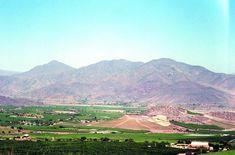
Chile has edged ahead of New Zealand for the first time in the World Apple Report's annual international competitive comparison.
The comparison, published in the February issue of the World Apple Report, measures performance in 28 countries against 22 different measures covering production efficiency, industry infrastructure and inputs, and financial and market factors. The measures score factors such as per cent of production of newer varieties, planting density, yield, adequacy and availability of storage, land, water and labour as well as interest rates, average export prices, per cent of crop exported and quality control.
Chile and New Zealand tied in the top spot last year and this ninth year of the study is the first time that NZ has been beaten, although not by much. "Given the subjective nature of the scoring system, this difference in rank is not statistically significant," the report, published by Washington-based Belrose Inc found. "These two most competitive apple-producing countries were comfortably ahead of third place finisher France."
The top three were also some way ahead of the following group of six led by the Netherlands and including Austria, Belgium, Italy, the US and Japan. South Africa was ranked 13th with the UK and Argentina joint 14th.
"We are excited about this new ranking because it reflects the vast improvements we have made in our apple-growing industry," said Rodrigo Duran, export director at exporter David Del Curto. "Our apple industry has reinvented itself these past 10 years by growing new varieties in greater density and with much greater scientific savvy in terms of irrigation, fertilisation and field management. And our packhouses and cold storage facilities are as modern as anywhere in the world."
Roger Manning, European consultant to ProChile said: "Strategic plantings of more popular varieties and successful results of these exports has led to an increase in confidence for new plantings and we are now beginning to see the results of this. Perhaps more meaningful, is that this is the result of being more consumer-oriented in the varieties that are grown and marketed."